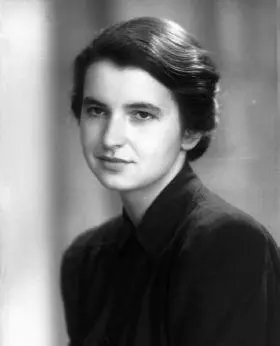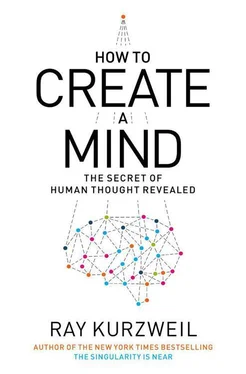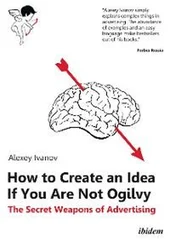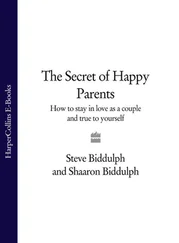Over the next century Darwin’s unifying idea deepened. In 1869, only a decade after the original publication of On the Origin of Species , Swiss physician Friedrich Miescher (1844–1895) discovered a substance he called “nuclein” in the cell nucleus, which turned out to be DNA. 3 In 1927 Russian biologist Nikolai Koltsov (1872–1940) described what he called a “giant hereditary molecule,” which he said was composed of “two mirror strands that would replicate in a semi-conservative fashion using each strand as a template.” His finding was also condemned by many. The communists considered it to be fascist propaganda, and his sudden, unexpected death has been attributed to the secret police of the Soviet Union. 4 In 1953, nearly a century after the publication of Darwin’s seminal book, American biologist James D. Watson (born in 1928) and English biologist Francis Crick (1916–2004) provided the first accurate characterization of the structure of DNA, describing it as a double helix of two long twisting molecules. 5 It is worth pointing out that their finding was based on what is now known as “photo 51,” taken by their colleague Rosalind Franklin using X-ray crystallography, which was the first representation that showed the double helix. Given the insights derived from Franklin’s image, there have been suggestions that she should have shared in Watson and Crick’s Nobel Prize. 6

Rosalind Franklin took the critical picture of DNA (using X-ray crystallography) that enabled Watson and Crick to accurately describe the structure of DNA for the first time.
With the description of a molecule that could code the program of biology, a unifying theory of biology was now firmly in place. It provided a simple and elegant foundation to all of life. Depending only on the values of the base pairs that make up the DNA strands in the nucleus (and to a lesser degree the mitochondria), an organism would mature into a blade of grass or a human being. This insight did not eliminate the delightful diversity of nature, but we now understand that the extraordinary diversity of nature stems from the great assortment of structures that can be coded on this universal molecule.
At the beginning of the twentieth century the world of physics was upended through another series of thought experiments. In 1879 a boy was born to a German engineer and a housewife. He didn’t start to talk until the age of three and was reported to have had problems in school at the age of nine. At sixteen he was daydreaming about riding on a moonbeam.
This young boy was aware of English mathematician Thomas Young’s (1773–1829) experiment in 1803 that established that light is composed of waves. The conclusion at that time was that light waves must be traveling through some sort of medium; after all, ocean waves traveled through water and sound waves traveled through air and other materials. Scientists called the medium through which light waves travel the “ether.” The boy was also aware of the 1887 experiment by American scientists Albert Michelson (1852–1931) and Edward Morley (1838–1923) that attempted to confirm the existence of the ether. That experiment was based on the analogy of traveling in a rowboat up- and downstream in a river. If you are paddling at a fixed speed, then your speed as measured from the shore will be faster if you are paddling with the stream as opposed to going against it. Michelson and Morley assumed that light would travel through the ether at a constant speed (that is, at the speed of light). They reasoned that the speed of sunlight when Earth is traveling toward the sun in its orbit (as measured from our vantage point on Earth) versus its apparent speed when Earth is traveling away from the sun must be different (by twice the speed of Earth). Proving that would confirm the existence of the ether. However, what they discovered was that there was no difference in the speed of the sunlight passing Earth regardless of where Earth was in its orbit. Their findings disproved the idea of the “ether,” but what was really going on? This remained a mystery for almost two decades.
As this German teenager imagined riding alongside a light wave, he reasoned that he should be seeing the light waves frozen, in the same way that a train would appear not to be moving if you rode alongside it at the same speed as the train. Yet he realized that this was impossible, because the speed of light is supposed to be constant regardless of your own movement. So he imagined instead riding alongside the light beam but at a somewhat slower speed. What if he traveled at 90 percent of the speed of light? If light beams are like trains, he reasoned, then he should see the light beam traveling ahead of him at 10 percent of the speed of light. Indeed, that would have to be what observers on Earth would see. But we know that the speed of light is a constant, as the Michelson-Morley experiment had shown. Thus he would necessarily see the light beam traveling ahead of him at the full speed of light. This seemed like a contradiction—how could it be possible?
The answer became evident to the German boy, whose name, incidentally, was Albert Einstein (1879–1955), by the time he turned twenty-six. Obviously—to young Master Einstein— time itself must have slowed down for him . He explains his reasoning in a paper published in 1905. 7 If observers on Earth were to look at the young man’s watch they would see it ticking ten times slower. Indeed, when he got back to Earth, his watch would show that only 10 percent as much time had passed (ignoring, for the moment, acceleration and deceleration). From his perspective, however, his watch was ticking normally and the light beam next to him was traveling at the speed of light. The ten-times slowdown in the speed of time itself (relative to clocks on Earth) fully explains the apparent discrepancies in perspective. In the extreme, the slowdown in the passage of time would reach zero once the speed of travel reached the speed of light; hence it was impossible to ride along with the light beam. Although it was impossible to travel at the speed of light, it turned out not to be theoretically impossible to move faster than the light beam. Time would then move backward.
This resolution seemed absurd to many early critics. How could time itself slow down, based only on someone’s speed of movement? Indeed, for eighteen years (from the time of the Michelson-Morley experiment), other thinkers had been unable to see a conclusion that was so obvious to Master Einstein. The many others who had considered this problem through the latter part of the nineteenth century had essentially “fallen off the horse” in terms of following through on the implications of a principle, sticking instead to their preconceived notions of how reality must work. (I should probably change that metaphor to “fallen off the light beam.”)
Einstein’s second mind experiment was to consider himself and his brother flying through space. They are 186,000 miles apart. Einstein wants to move faster but he also desires to keep the distance between them the same. So he signals his brother with a flashlight each time he wants to accelerate. Since he knows that it will take one second for the signal to reach his brother, he waits a second (after sending the signal) to initiate his own acceleration. Each time the brother receives the signal he immediately accelerates. In this way the two brothers accelerate at exactly the same time and therefore remain a constant distance apart.
But now consider what we would see if we were standing on Earth. If the brothers were moving away from us (with Albert in the lead), it would appear to take less than a second for the light to reach the brother, because he is traveling toward the light. Also we would see Albert’s brother’s clock as slowing down (as his speed increases as he is closer to us). For both of these reasons we would see the two brothers getting closer and closer and eventually colliding. Yet from the perspective of the two brothers, they remain a constant 186,000 miles apart.
Читать дальше













